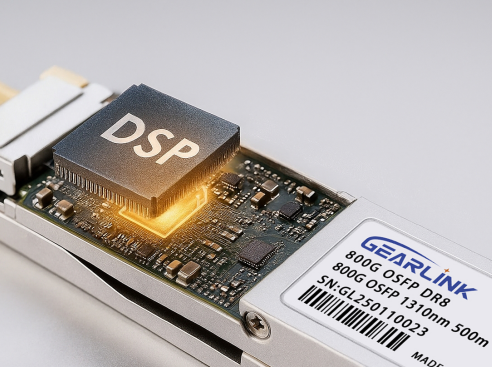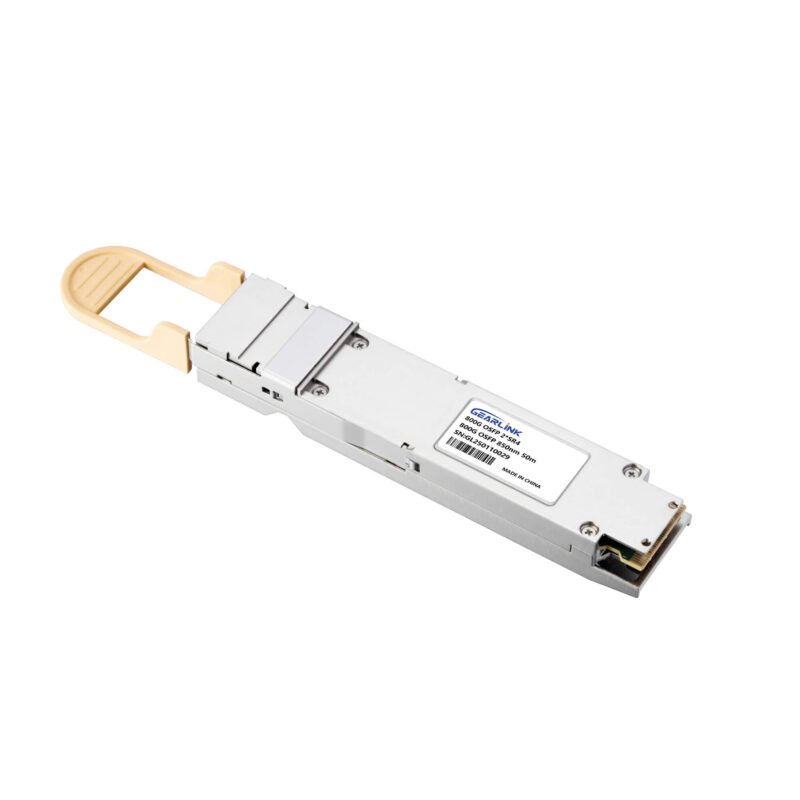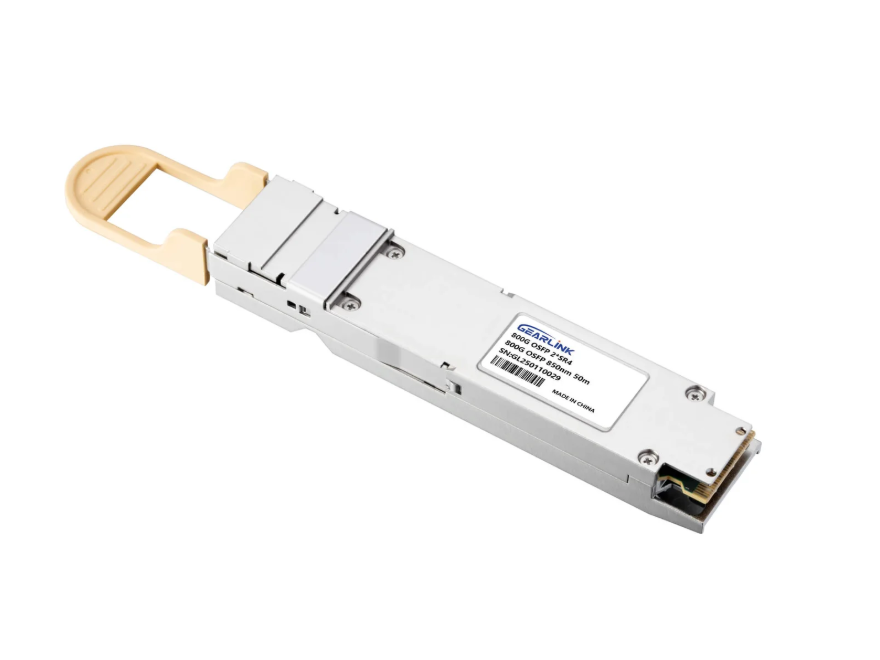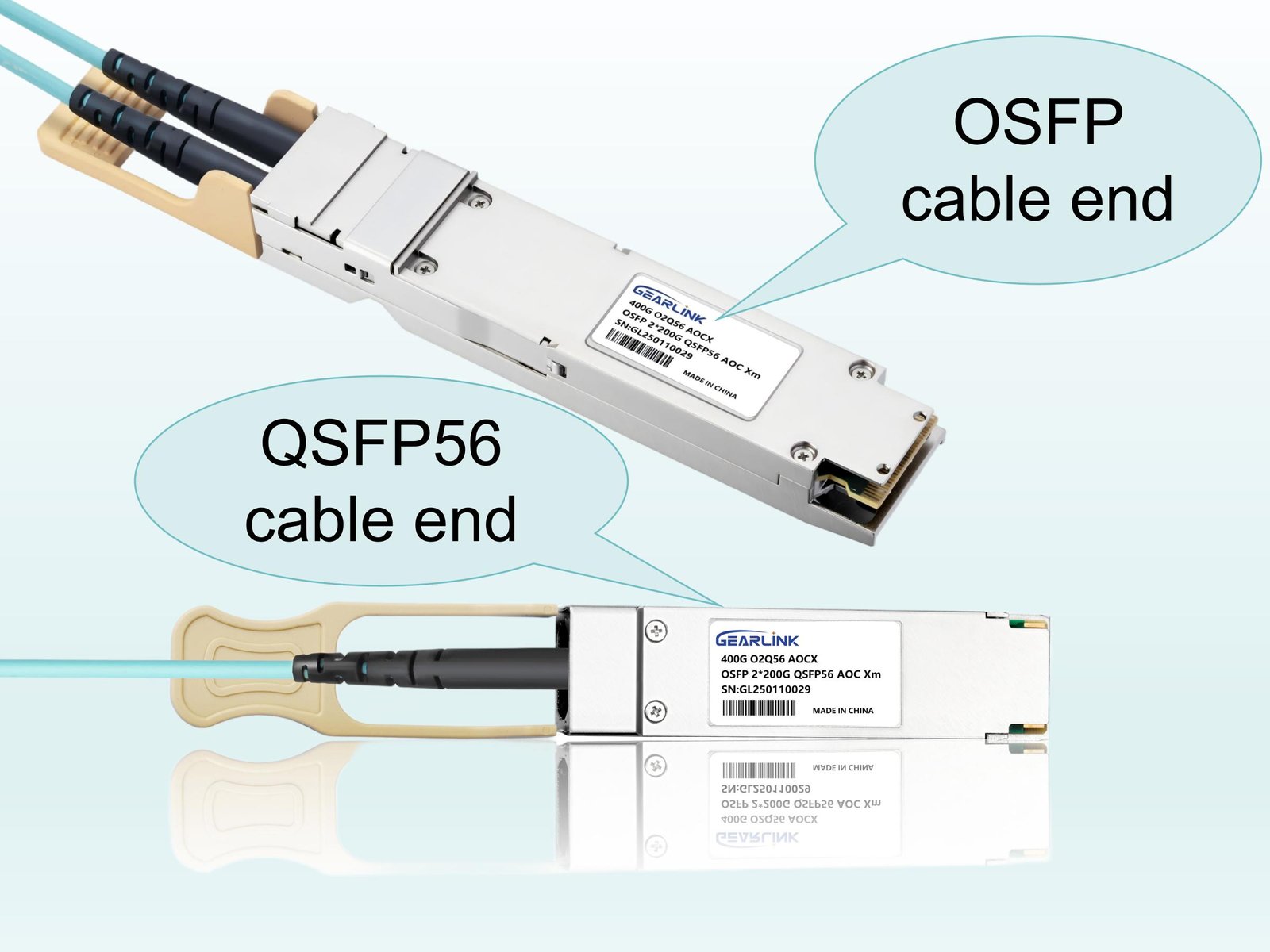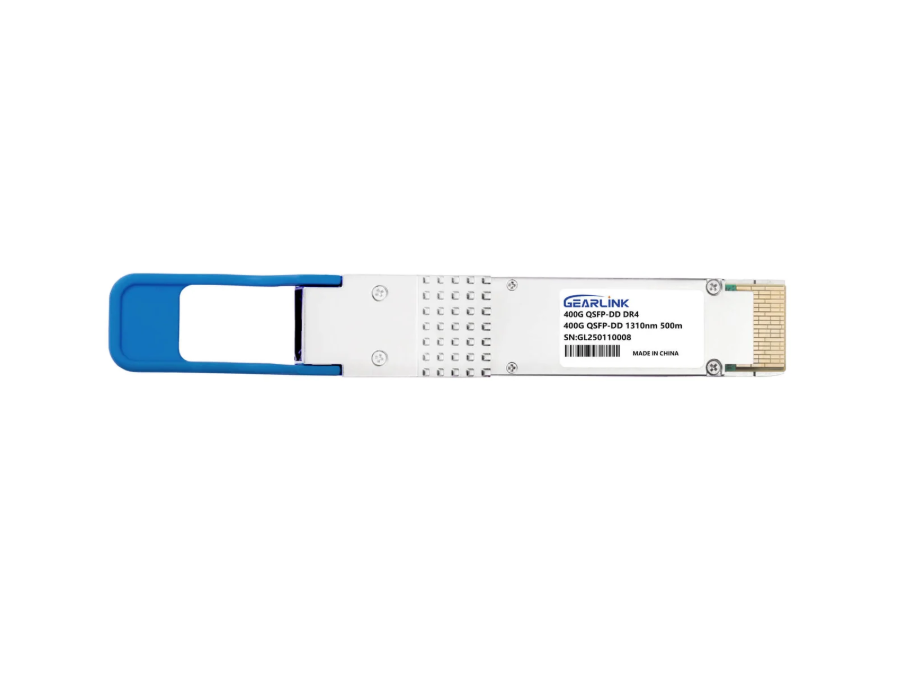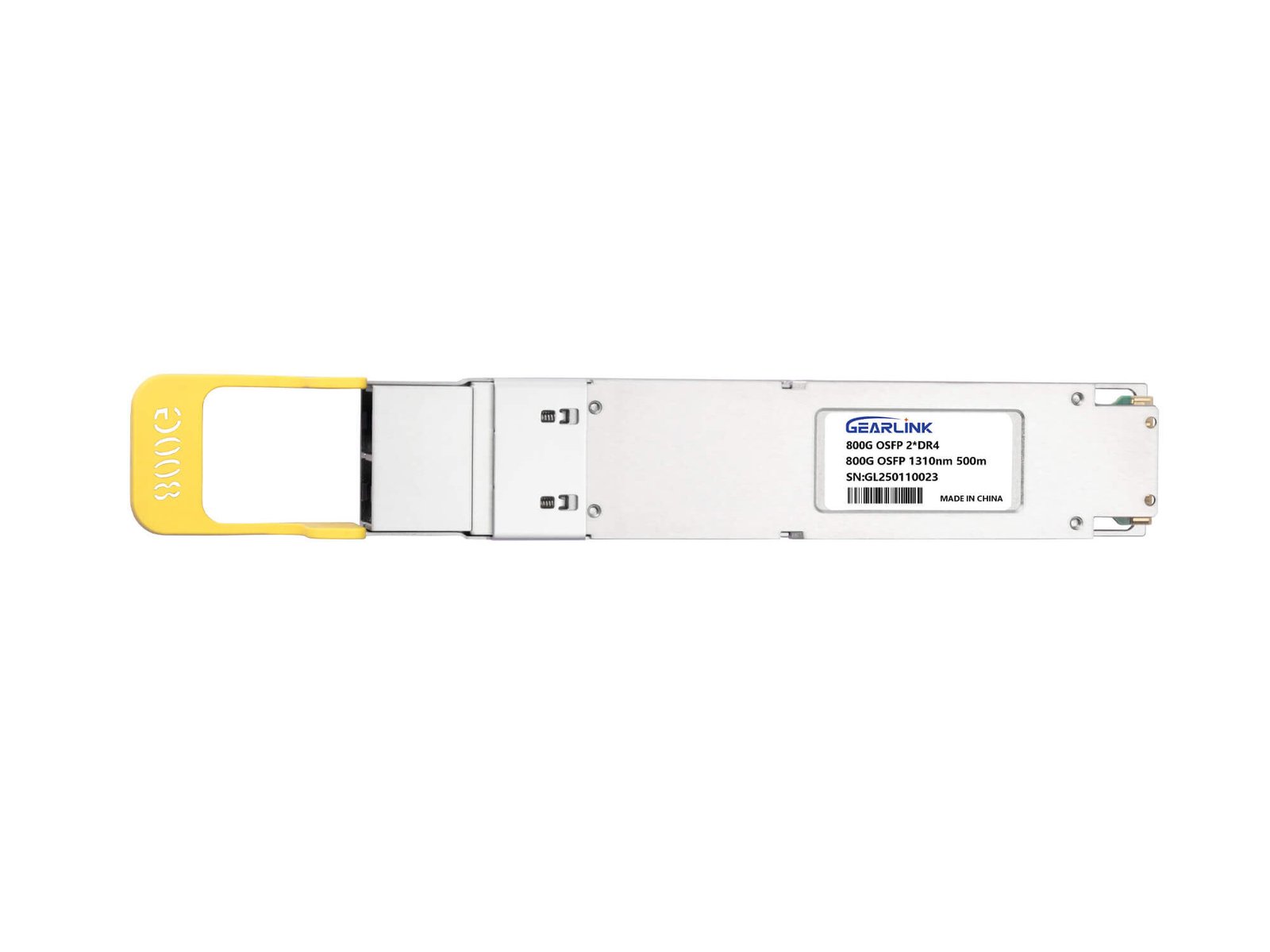Introduction
With the continuous wave of digitalization and intelligence, global data traffic has been increasing at an exponential rate. Hyperscale data centers, artificial intelligence training clusters, cloud computing platforms, and 5G/6G mobile communication networks have all placed unprecedented demands on high-speed, low-latency, and highly reliable optical interconnects. As the core device of the next-generation high-speed optical communication, the 800G optical transceiver has become the central focus of the industry.
In the design of 800G optical transceivers, DSP (Digital Signal Processor) chips have been widely adopted. These chips play a decisive role in signal equalization, error rate reduction, and nonlinear impairment compensation. However, with the evolution of technology, new low-power architectures such as LPO (Linear Pluggable Optics) and LRO (Linear Receive Optics) have emerged. These approaches have started to challenge and complement the traditional DSP-dominated model.
This article will explore the following aspects in depth:
1,What is a DSP chip?
2,Why is the DSP chip crucial for the 800G optical transceiver?
3,What is Transmit Retimed DSP?
4,What are LPO and LRO?
5,Will LPO and LRO completely replace DSP-based solutions?
6,Future directions of DSP and emerging architectures in 800G optical transceivers.
1. What is a DSP Chip?
A DSP chip is a processor designed specifically for high-speed mathematical calculations and signal processing. Compared with general-purpose CPUs, DSP chips are optimized for multiplication-accumulation (MAC) operations, filtering, and Fast Fourier Transform (FFT).
In the context of an 800G optical transceiver, the DSP chip undertakes several essential tasks:
Signal equalization: Compensation for dispersion, channel frequency response imbalance, and linear impairments.
Noise suppression: Improvement of the signal-to-noise ratio to ensure low error rates.
Nonlinear compensation: Processing of fiber-induced nonlinear effects such as self-phase modulation (SPM), cross-phase modulation (XPM), and four-wave mixing (FWM).
Modulation and demodulation: Support for advanced modulation formats like PAM4.
Forward Error Correction (FEC): Insertion of redundant bits to significantly reduce error probability.
In simple terms, the DSP chip functions as the “brain” of the 800G optical transceiver, performing sampling, recovery, and reconstruction of high-speed optical signals to guarantee stable and reliable data transmission.
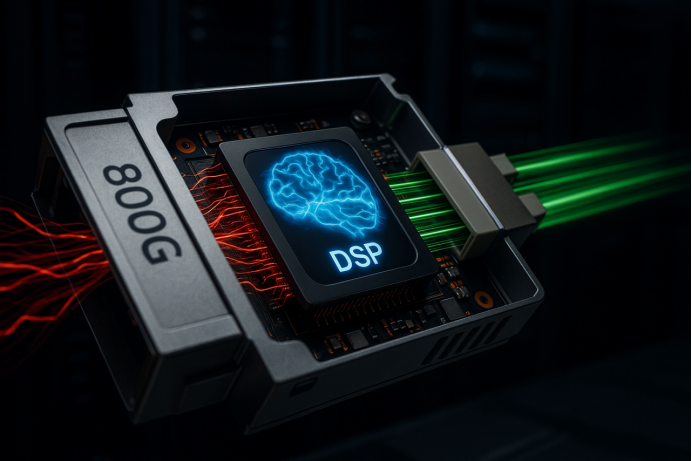
2. Importance of DSP Chips in 800G Optical Transceivers
2.1 Enabling Higher Data Rates
800G optical transceivers generally adopt PAM4 modulation. While PAM4 doubles spectral efficiency compared with NRZ, it has reduced eye openings and weaker noise immunity. DSP technology mitigates these drawbacks through adaptive equalization, Decision Feedback Equalizer (DFE), and FEC, ensuring reliable operation in commercial networks.
2.2 Extending Transmission Distance and Quality
Without DSP, the reach of PAM4 signals is limited to a few hundred meters due to dispersion and distortion. With DSP, the reach of an 800G optical transceiver can be extended to several kilometers, which is critical for both intra-data center interconnects and metropolitan optical networks.
2.3 Reducing Operational Complexity
By monitoring channel conditions in real time and self-adjusting parameters, DSP enables true “plug-and-play” capabilities for the 800G optical transceiver, thereby reducing the operational burden of large-scale data centers.
2.4 Guaranteeing Interoperability
DSP functions mask performance differences among vendors, ensuring interoperability between 800G optical transceivers from different manufacturers.
3. What is Transmit Retimed DSP in 800G Optical Transceivers?
800G OSFP SR8-800GBASE 2 x SR4/SR8 OSFP PAM4 850nm 50m DOM Dual MPO-12/APC MMF InfiniBand NDR Optical Transceiver Module
Price range: NT$539 through NT$808
The Transmit Retimed DSP architecture has been increasingly deployed in 800G optical transceivers. Its main functions include:
Clock recovery and retiming: Ensuring phase synchronization and open eye diagrams even after PCB traces, connectors, and electrical channel distortions.
Pre-emphasis: Applying pre-compensation to signals at the transmitter side to counteract anticipated channel losses.
Waveform shaping: Improving the quality of transmitted signals and reducing the burden on the receiver DSP.
Through these mechanisms, the Transmit Retimed DSP significantly improves link quality and is especially suitable for environments where channel impairments and interoperability issues are more prominent.
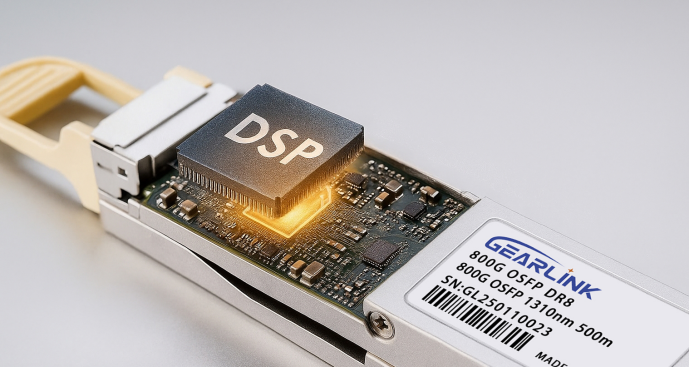
4. What are LPO and LRO in 800G Optical Transceivers?
With growing emphasis on energy efficiency, LPO (Linear Pluggable Optics) and LRO (Linear Receive Optics) solutions have emerged as promising alternatives to DSP-dominated architectures.
4.1 LPO (Linear Pluggable Optics)
In the LPO model, no DSP is embedded inside the 800G optical transceiver. Instead, equalization and FEC functions are offloaded to the host switch ASIC.
Advantages: Significant power savings (30–40% lower than DSP-based modules) and reduced module cost.
Disadvantages: Higher requirements for link quality and greater DSP capability must be integrated into the switch ASIC.
4.2 LRO (Linear Receive Optics)
LRO focuses on simplifying the receive path. In LRO-based 800G optical transceivers, received signals are directly forwarded to the host-side ASIC without DSP processing.
4.3 Application Scenarios
LPO and LRO are ideal for short-reach connections, such as rack-to-rack or intra-rack links (a few meters to tens of meters). In longer-reach environments, DSP remains indispensable.
5. Will LPO and LRO Completely Replace DSP in 800G Optical Transceivers?
This remains one of the most debated questions in the optical communications industry.
Complete replacement is unlikely: For short distances, LPO and LRO provide significant advantages. However, for hundreds of meters or multi-kilometer transmission distances required in Data Center Interconnects (DCI) and metropolitan optical networks, DSP-enabled 800G optical transceivers are essential.
Coexistence as the future model: DSP-based 800G optical transceivers will dominate long-reach and high-performance scenarios, while LPO/LRO modules will capture short-reach, low-power opportunities, especially in AI/ML clusters.
6. Future Trends of DSP and Emerging Architectures in 800G Optical Transceivers
6.1 Development of Low-Power DSP
Future DSP chips for 800G optical transceivers will emphasize energy efficiency, leveraging advanced process nodes (5nm/3nm) and optimized circuits to approach the power efficiency of LPO solutions.
6.2 AI-Driven DSP Algorithms
Machine learning and AI will be increasingly embedded into DSP functions, enabling intelligent adaptation to varying link conditions and improving nonlinear compensation.
6.3 Beyond 800G: Towards 1.6T and 3.2T Optical Transceivers
The 800G optical transceiver is regarded as a transitional stage. As the industry advances toward 1.6T and even 3.2T modules, both DSP architectures and LPO/LRO solutions will face greater demands. A hybrid ecosystem that integrates both will likely emerge.
Conclusion
The DSP chip remains the cornerstone of the 800G optical transceiver, handling critical tasks such as equalization, error reduction, and nonlinear compensation. The Transmit Retimed DSP has further optimized signal transmission through retiming and pre-emphasis. Meanwhile, LPO and LRO have introduced lower-power and lower-cost alternatives, especially effective in short-reach scenarios.
However, LPO and LRO will not fully replace DSP. Instead, DSP-based and linear architectures will coexist across different deployment scenarios. In the long term, as DSP chips become more power-efficient and AI-driven, and as LPO/LRO expand in applicability, the boundary between them may blur, leading to a diverse and adaptive optical transceiver ecosystem.
The evolution of the 800G optical transceiver will thus be jointly driven by DSP advancements and linear architectures, paving the way for higher data rates, lower power consumption, and greater network adaptability.
